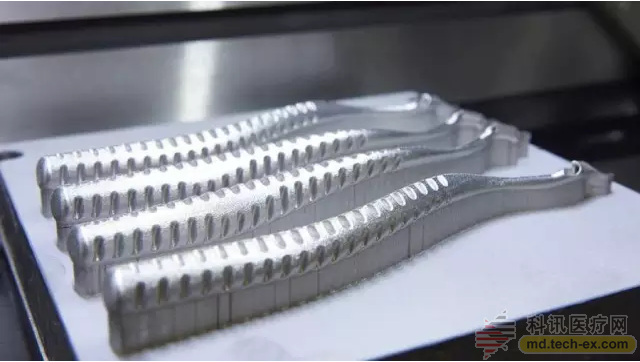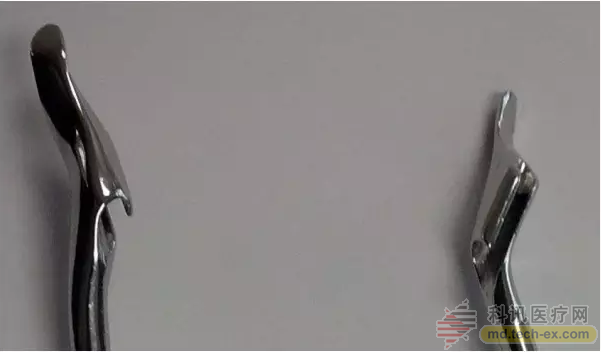Knee anterior cruciate ligament (ACL) injury is a serious injury and the recovery process is long and painful. Patients with severe injuries need to undergo ACL repair or replacement surgery. At the time of surgery, the surgeon first needs to remove the residual ligament that is attached to the tibia and femur, and then imitate the "path" of the human natural ligament to implant the graft ligament. It is not difficult to imagine that the operation of such an operation that strives for precision and minimally invasive surgery not only imposes extremely high demands on the doctor's surgical level, but also poses no small challenge to the surgical tools.
To improve the accuracy of this type of surgery, DanaMed Inc. of the United States has optimized the ligament guides used in ACL surgery and manufactured them directly using metal 3D printing technology. What improvements have been made to the R&D team? Why did they choose 3D printing technology? In this issue, 3D Science Valley will find the answer with you.
The ACL surgical tool consists of two parts, one is a 3D printed ligament guide; the other is a special flexible directional drill with a diameter of 2.2 mm. The 3D printed ligament guide is a key part of the surgical tool because it allows the doctor to flexibly and precisely manipulate the guide needle into the joint outside the knee joint. With such a surgical tool, ACL repair or replacement surgery can be performed with minimally invasive knee joints.
Exploring the knee
"natural path"

Source: AM
The handle area of ​​the doctor's hand occupies 95% of the entire ligament guide. Although the top of the guide only accounts for 5%, it is the key area for design optimization. This is because the tip of the guide will enter the knee joint during surgery and control the guide bit for surgical treatment, so the design of the guide needs to follow the natural "path" of the human ligament in the knee joint and muscle. We can imagine that this design that follows the natural "path" is more than enough to "walk" between human tissues?
However, the "path" of the ligament in the body is complicated, and it is not easy to follow the design idea to explore the design of the aligner, which challenges the professional ability of the designer in the field of surgery and engineering.
Metal 3D printing
Transform design into implementation

Source: AM
As can be seen from the above figure, the groove shape and angle of the top of the guide following the natural "path" design is more complicated. The material of manufacture is a nickel-based alloy material (Inconel 718), which is a difficult-to-machine material. If machining technology is used to make such complex shapes, it needs to be divided into multiple parts, longer manufacturing time, more material to be consumed, and manufacturing costs. When machining technology is used, the manufacturing cost will increase rapidly as the complexity of the parts increases, and the use of 3D printing technology is not sensitive to the complexity of the product. That is, the more complex the components, the more suitable for using 3D printing technology. The design complexity of the ligament guide determines that it is more suitable for manufacturing using 3D printing technology, creating a complex shape of the guide at an acceptable cost.
The R&D staff chose to work with the Stratasys Direct Manufacturing Service Center in the United States to first validate the design using the FDM 3D printer print guide design prototype. After the design is mature, the surgical tools are made using selective laser-melting metal 3D printing technology.
Dimensions: The top size of the guide is divided into 5.5 mm and 7.7 mm models. Metal 3D printing technology can be smooth and accurate in size and shape.
Strength: The density of the nickel alloy material provides the necessary balance of strength and weight for the guide, allowing the doctor to better control the directional drill. The integrated design of the handle and the guide tip provides a solid foundation for the doctor's flexible control of the surgical tool.
Shape: The design of the guide handle is ergonomic. The tip end portion of the guide is designed to follow the "path" of the human ligament, so it matches the joint anatomy. These small details lay the foundation for the doctor to perform the operation flexibly and accurately.
Post-treatment: After 3D printing is completed, rigorous post-treatment will be performed, including: removal of support structure, surface polishing, cleaning and disinfection.
Fast design iteration
While metal 3D printing technology has advantages over traditional technologies in the manufacture of complex ligament guides, the manufacturing process is not straightforward. Of the six ligament guides manufactured in the first batch, five were unusable due to dimensional inaccuracies. This is because the cooling of the metal material after the completion of the metal printing causes a change in the size of the product. When improving the design of the product, it is necessary to take into account the changes in the product size caused by the heat shrinkage during the cooling process and the polishing process.
In order to make the surgery more precise, the design optimization of the ligament guide seems to be endless. Therefore, even for quality qualified guides, the developer will make further design iterations based on the doctor's feedback. From collecting feedback to doctors, to redesigning and 3D printing, new directors are often available within a week. As long as there is an optimized design, you can print new products in 3D at any time. 3D printing is very flexible compared to the use of molds for manufacturing.
Flex Duct Tape,White Flex Tape,White Flex Seal Tape,Flex Seal Waterproof Tape
Kunshan Jieyudeng Intelligent Technology Co., Ltd. , https://www.jerrytapes.com